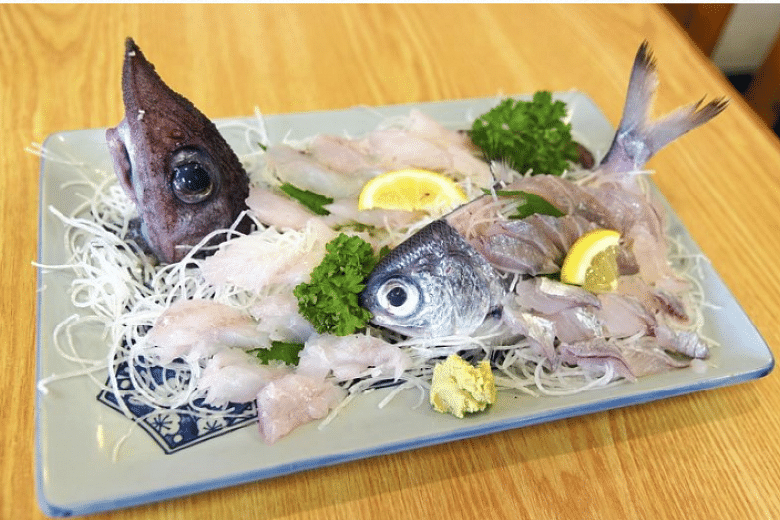(THE JAPAN NEWS/ASIA NEWS NETWORK) - Suruga Bay, off Shizuoka Prefecture, is a treasure trove of deep-sea fish. The Heda district in the city of Numazu in the prefecture lies on the coast about an hour's drive from the city centre.
A large volume of the local catch of deep-sea fish is landed in the district and the bay's rich bounty can be found served at many restaurants in the area.
In late September, Mr Toshiyuki Nakajima, owner of seafood restaurant Marukichi Shokudo, showed off some of the fresh fish he had bought that day, including two seasonal varieties - Japanese grenadier, also known as toujin, and a type of beardfish called arame ginme.
The restaurant gets its seafood directly from local fisherman.
The owner served me a plate of sashimi featuring two kinds of deep-sea fish priced at 2,000 yen (S$24), plus tax.
Japanese grenadier is called "gehou" by local residents. The species is found at depths between 300m and 1,000m and is characterised by its oddly shaped head and sharp pointed nose.
Though the appearance of the fish is slightly strange, the taste of its white flesh was far from peculiar. The contrast of its almost grotesque appearance and the fresh flavour of the sashimi, somehow made the dish even more delicious.
Arame ginme is a deep-sea fish species that has become popular in recent years. It is another fish that does not look particularly appetising, but eaten as sashimi, it tasted surprisingly sweet. I imagined it would go quite well with sake.
"Ginme contains glycine, which creates the sweet flavour," Mr Nakajima said.
He studied fishery science in university and now serves as the leader of a local project to revitalise the Heda district community by taking advantage of the deep-sea fish caught in the region. Hearing him share his knowledge about the region's fish made me appreciate the meal even more.
A deep-sea fish species that some consider a symbol of the Heda district is spider crab, of which the largest have a legspan of 3m.
In the district, many restaurants serve fresh spider crabs that they keep alive in tanks.
Noichi Shokudo, a restaurant that offers a wide variety of crab dishes, always keeps about 40 to 50 of the creatures in water kept at 12 deg C.
Its menu includes a dish that features a whole spider crab (10,000 yen to 20,000 yen, tax excluded), a set meal (5,250 yen), gratin (1,000 yen) and kaisen-don seafood rice bowl (1,900 yen).
"Because our crabs are not frozen, their meat tastes extremely fresh," Noichi Shokudo owner Inakazu Nakajima said.
In the Heda district, residents draw faces on empty crab shells and use them as masks to drive away evil spirits as part of a local tradition.
During my trip, I felt the deep connection that exists between the lives of the locals and the delicious deep-sea creatures from Suruga Bay.
According to the Heda tourist association, there are seven restaurants, 17 minshuku guest houses and 10 ryokan inns which serve local seafood from the district.
Heda toro hanpen fish cake is a regional speciality. Local cuisine features fish such as Japanese barramundi ("mehikari" in Japanese, locally called "torobotchi") and deep sea smelt ("nigisu" in Japanese, locally called "megisu").
It is a tradition in the district that store and restaurant owners raise "nobori" banner flags at the entrances on days when seasonal fish catches are brought in.
An official of the tourist association said: "Local chefs use different ingredients to make the region's speciality dishes. It is interesting to enjoy the variety of options at each of the establishments."

